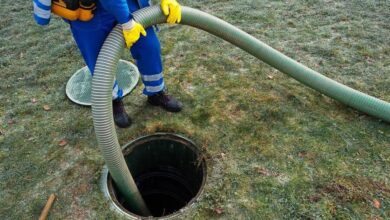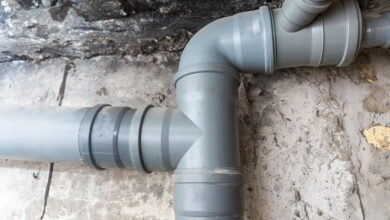How to Identify and Fix Common Plumbing Leaks for Energy Efficiency

Ever heard that annoying drip-drip-drip in the middle of the night? Or worse, stepped into a puddle where there shouldn’t be one? If you’re nodding your head, you’re not alone. Fix Common Plumbing Leaks are the silent saboteurs of our homes, quietly draining our wallets and wasting precious resources. But fear not! This guide is your secret weapon in the battle against leaks, helping you save money and become a more eco-friendly homeowner.
Key Takeaways:
- Learn to spot common plumbing leaks before they become major headaches
- Discover DIY fixes for simple leaks and when to call in the pros
- Uncover energy-efficient upgrades that’ll make your wallet and the planet happy
- Find out how to prevent future leaks and keep your plumbing in tip-top shape
- Explore financing options to make those big plumbing projects more manageable
The Leak Detective: Identifying Common Plumbing Culprits
Let’s face it, nobody wants to play hide-and-seek with water leaks. But knowing what to look for can save you a ton of hassle (and cash) down the line. So, put on your detective hat, and let’s explore the usual suspects:
Faucet Fiascos: The Drip That Drives You Crazy
You know that irritating drip that seems to get louder at night? That’s your faucet crying for help. Most often, it’s caused by worn-out washers or O-rings – small parts that can lead to big water waste.
How to spot it:
- Listen for that telltale dripping sound
- Look for water stains in the sink or tub
- Check for moisture around the base of the faucet
Quick fix: Tighten the faucet handle. If that doesn’t work, you might need to replace the washer or O-ring. Don’t worry; we’ll get into the nitty-gritty of repairs later.
Toilet Troubles: When Your Throne Leaks
A leaky toilet isn’t just gross – it’s a water waster extraordinaire. The culprit is often a faulty flapper valve or a loose connection.
Signs you’ve got a toilet leak:
- Water pooling around the base of the toilet
- A toilet that seems to run constantly
- Unexpected increases in your water bill
Pro tip: Put a few drops of food coloring in the tank. If it shows up in the bowl without flushing, you’ve got a leak!
Pipe Problems: The Hidden Menace
Leaky pipes can be sneaky. They’re often hidden behind walls or under floors, making them harder to spot. But don’t let that fool you – they can cause serious damage if left unchecked.
Keep an eye out for:
- Damp or discolored walls or ceilings
- Musty odors or visible mold growth
- Unexplained spikes in your water bill
Warning: If you suspect a pipe leak, don’t ignore it! The longer you wait, the more damage it can cause.
Water Heater Woes: When Hot Water Goes Rogue
Your water heater works hard to keep your showers steamy, but it can spring a leak too. This can lead to water damage and decreased efficiency – not to mention cold showers!
Check for:
- Puddles or moisture around the base of the heater
- Rusty spots on the tank
- Lukewarm water when it should be hot
Remember: Water heaters have a lifespan. If yours is over 10 years old, it might be time for an upgrade.
Rolling Up Your Sleeves: Fixing Plumbing Leaks for Energy Efficiency
Now that you’ve identified the leaks, it’s time to tackle them head-on. Some fixes are DIY-friendly, while others might require a professional plumber. Let’s break it down:
Farewell to Faucet Leaks
- Turn off the water supply to the faucet.
- Disassemble the faucet (take pictures as you go to help with reassembly).
- Replace the worn washers or O-rings.
- Put everything back together and test for leaks.
Voila! You’ve just saved gallons of water and silenced that annoying drip.
Tackling Toilet Leaks
For a running toilet:
- Adjust the flapper valve to ensure it’s sealing properly.
- If that doesn’t work, you might need to replace the flapper.
For leaks at the base:
- Tighten the bolts connecting the toilet to the floor.
- If that doesn’t do the trick, you may need to replace the wax ring seal.
Patching Up Pipe Leaks
Small leaks:
- Turn off the water supply.
- Clean and dry the area around the leak.
- Apply epoxy putty or use a pipe repair clamp as a temporary fix.
Larger leaks or old pipes:
- It’s best to call in a professional plumber. They can replace the affected section of pipe or advise if more extensive repairs are needed.
Handling Water Heater Leaks
- Turn off the power supply to the heater.
- Shut off the water supply.
- Drain the tank (if necessary).
- Inspect connections and replace any faulty components.
- If the tank itself is leaking, it’s time for a replacement.
Pro tip: Consider upgrading to a more energy-efficient model. It might cost more upfront, but you’ll save on energy bills in the long run.
An Ounce of Prevention: Keeping Future Leaks at Bay
You know what they say – the best offense is a good defense. Here’s how to keep those pesky leaks from coming back:
Regular Maintenance: Your Plumbing’s Best Friend
- Make it a habit to check for signs of leaks, corrosion, or wear and tear.
- Don’t ignore small issues – they can turn into big problems if left unchecked.
- Consider scheduling annual inspections with a professional plumber.
Upgrade for Efficiency
Out with the old, in with the new! Replacing outdated fixtures and appliances can make a big difference:
| Fixture/Appliance | Potential Water Savings | Energy Savings |
|---|---|---|
| Low-flow toilet | Up to 13,000 gal/year | N/A |
| Efficient showerhead | Up to 2,700 gal/year | $70/year |
| ENERGY STAR washer | Up to 3,000 gal/year | $35/year |
Insulate to Innovate
Wrapping your hot water pipes in insulation isn’t just for cold climates. It can:
- Keep water hotter for longer
- Reduce the need for constant reheating
- Improve overall energy efficiency
Show Me the Money: Financing Your Plumbing Upgrades
Let’s face it – some plumbing projects can get pricey. But don’t let that stop you from making important upgrades. There are ways to make it more affordable:
Utility Companies to the Rescue
Many utility providers offer rebates or incentives for energy-efficient upgrades. Check with your local company to see what’s available. You might be surprised at how much you can save!
Home Improvement Loans
For bigger projects, consider:
- Home equity loans
- Personal loans
- Government-backed energy efficiency loans
Remember, these upgrades are an investment in your home’s value and your future savings.
Wrapping It Up: Your Leak-Free Future Awaits
Congrats! You’re now armed with the knowledge to tackle plumbing leaks like a pro. Remember, a little attention to your plumbing can go a long way in saving water, energy, and money.
Here’s a quick recap of what we’ve covered:
- Learn to spot common leaks early
- Fix simple issues yourself, but don’t hesitate to call a pro for bigger problems
- Upgrade to energy-efficient fixtures and appliances
- Maintain your plumbing system regularly
- Explore financing options for major upgrades
By following these tips, you’re not just fixing leaks – you’re creating a more sustainable, efficient home. And that’s something we can all feel good about.
So, the next time you hear a drip or spot a puddle, don’t panic. Take a deep breath, remember what you’ve learned, and tackle that leak head-on. Your wallet (and the planet) will thank you!




